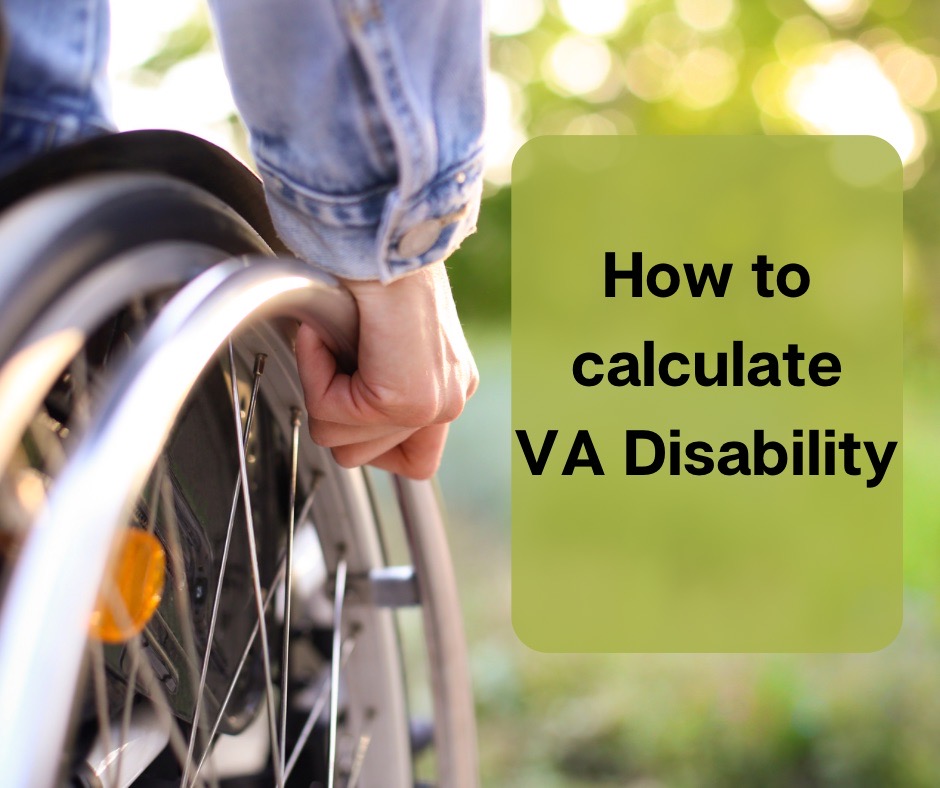How to Calculate VA Disability
The question of how to calculate VA disability compensation comes up on nearly a weekly basis. Just a couple of weeks ago we had a Veteran who has 30% disability ask what it would take to get their sleep apnea added to their claim. For those don’t know, sleep apnea with a CPAP machine is generally rated at 50% disabling. The Veteran said that adding the sleep apnea to his claim would put him at 80%. We almost hated to tell him that’s not exactly how it works.
VA Disability
We will start with just a little bit about disability. According to the VA, Veterans are entitled to receive disability compensation under the following general conditions:
- they were discharged from the military under conditions other than dishonorable
- their disease or injury was sustained or aggravated while active duty
- the disability is not due to their own willful misconduct or the abuse of drugs/alcohol
In addition, as we have stated before, there are three general requirements a Veteran must meet when they file for disability in order for the VA to grant disability compensation. These requirements are:
- a current diagnosis. According to the VA, it must be “competent evidence” of a current disability. This is usually covered by a current diagnosis of an injury or a disease.
- an in-service incident. There must be evidence (usually medical evidence, under certain circumstances lay evidence will suffice) of an incident in service which caused or aggravated the injury or illness.
- a link or nexus between the two. The VA requires “competent evidence” of a link between the incident in service and the current injury or disease. This competent evidence will usually need to be medical evidence, though sometimes lay evidence will work.
VA Compensation
The VA uses its rating schedule to determine the amount of disability compensation each service-connected disability receives. The ratings are based upon “the average impairments of earning capacity…from such injuries (Stichman, l Abrams and Spataro 2019)”. In other words, the VA has a schedule of possible disabilities and has determined, as far as practicable, how much they would impair the amount a person in civilian occupations would be able to earn.
The ratings range from 0% to 100% in increments of 10.
VA Math
Okay, here is where it gets interesting. When a Veteran submits a disability claim to the VA, they can list one issue on the claim form, or a dozen issues. However, each separate issue is treated as its own claim, and will be researched and adjudicated as such. And as the issues are adjudicated, if they are approved, the disabilities are added to the claim one at a time to arrive at the Veterans final rating.
As the ratings are added to the claim they are not added together as one would think. Each percentage is taken from the remaining percentage to arrive at the new total. In other words. If a Veteran is already rated at 50% disability and files a new claim which is approved with a rating of 50%, the total will not be 100%. The new 50% will be 50% OF the ‘remaining’ 50% on the path to 100, to give a total of 75%. Since the VA pays in increments of 10%, they will round 75% up to 80% so the new disability rating will be 80%. The video below will explain a little more clearly.
Even though your actual rating may be 32% or 65%, understand that the VA only pays on 10% increments. Therefore, the VA will round your actual number up or down. This is important to remember. The VA may be paying you for 70%, your actual percentage may be anywhere from 65% to 74%.
IF a Veteran has a bilateral disability, things change a little bit. A bilateral disability affects both sides of the individual, as in both arms, both legs, or paired skeletal muscles. In that case. The VA will add 10% of the bilateral total rating to the bilateral rating. For example, if the VA decides a Veteran has a rating of 10% for the right leg and a 20% rating for the left foot, they will add those disabilities together and then add 10% of that total for the ‘bilateral factor’.
There are several web pages online with VA Disability calculators. They can give you an idea of what you may be receiving. However, the VA has the final say in what your actual disability rating is.
As always, if you have any questions or comments, you can drop them in the comment field below or send us an email to info@nwavet.org.
God Bless,
-NWAVet







